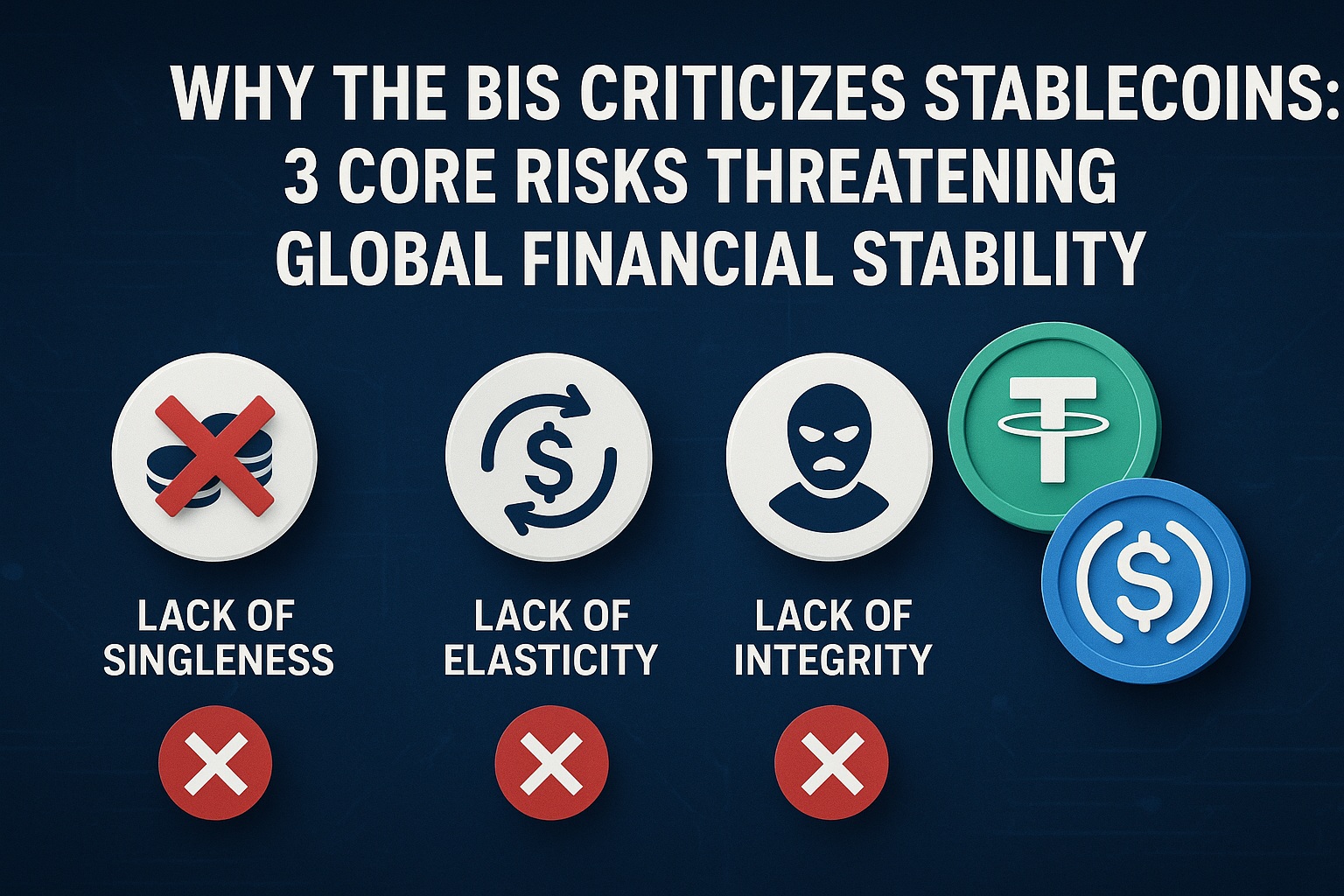The BIS Sounds the Alarm on Stablecoins
The Bank for International Settlements (BIS), often referred to as the “central bank of central banks,” has issued a critical report on stablecoins. Despite their growing popularity and widespread use, the BIS argues that stablecoins fail to meet the core principles of money and could potentially destabilize global financial systems.
In the report, the BIS highlights three key shortcomings—lack of singleness, elasticity, and integrity—that undermine the viability of stablecoins as real monetary instruments.
Why Stablecoins Are Not Real Money
According to the BIS, the original goal behind digital currencies like Bitcoin (BTC) and stablecoins was to create decentralized alternatives to traditional money. However, the report argues that these assets often fail to function effectively as currencies due to:
- High volatility
- Low efficiency
- Limited real-world utility
Most notably, stablecoins—which claim to be pegged 1:1 to fiat currencies like the USD—have shown pricing inconsistencies and are often managed by centralized entities with limited transparency.
⚠️ Three Fundamental Failures of Stablecoins
1. ❌ Lack of Singleness
The BIS notes that each stablecoin acts as a separate claim against its issuer. Unlike sovereign currencies, stablecoins are not interchangeable. This lack of universal acceptance leads to fragmentation, arbitrage opportunities, and undermines the principle of monetary singleness.
2. ❌ Lack of Elasticity
Stablecoins can’t expand their balance sheets in times of crisis. Unlike central banks, they lack tools like emergency lending or real-time gross settlement systems to provide liquidity during market stress. This rigidity makes them ill-suited for modern financial systems.
3. ❌ Lack of Integrity
Because stablecoins are often used via non-custodial wallets, they can bypass Know Your Customer (KYC) and Anti-Money Laundering (AML) controls. This has made them a favorite tool for illicit activities like money laundering, fraud, and evasion of regulatory oversight.
Even with blockchain traceability, tools like coin mixers make fund tracing extremely difficult. The BIS warns that this poses a severe compliance and enforcement challenge for regulators worldwide.
Stablecoins May Introduce Systemic Risk
The BIS report warns that stablecoins could:
- Undermine monetary sovereignty, especially in emerging economies facing high inflation.
- Disrupt bond and money markets, as stablecoin issuers increasingly allocate reserves into short-term U.S. Treasuries.
- Destabilize banks, if institutions start issuing blockchain-based stablecoins outside traditional deposit insurance systems.
As of 2024, the stablecoin market is estimated to exceed $400 billion, with over 99% pegged to the U.S. dollar. In high-inflation regions, stablecoins are becoming an attractive alternative to local currencies, further weakening central banks’ monetary control.
BIS Calls for Immediate Global Regulation
The BIS concludes by urging governments and regulators to adopt a technology-neutral but firm approach to stablecoin regulation. Key recommendations include:
- Mandatory KYC/AML compliance for all exchanges and wallets.
- Enforcing the “travel rule” for non-custodial wallets.
- Requiring liquid reserve backing, such as short-term government bonds.
- Implementing transparent audits and disclosures.
- Banning interest payments on stablecoins to avoid yield-seeking arbitrage.
These proposals align with global efforts already underway. For instance, Japan has begun enforcing wallet-level travel rules as of June 2025.
Final Thoughts
The BIS makes a strong case: stablecoins are not the future of money—at least, not in their current form. Their inability to meet basic monetary standards, combined with growing systemic influence, demands urgent and coordinated global regulation.

